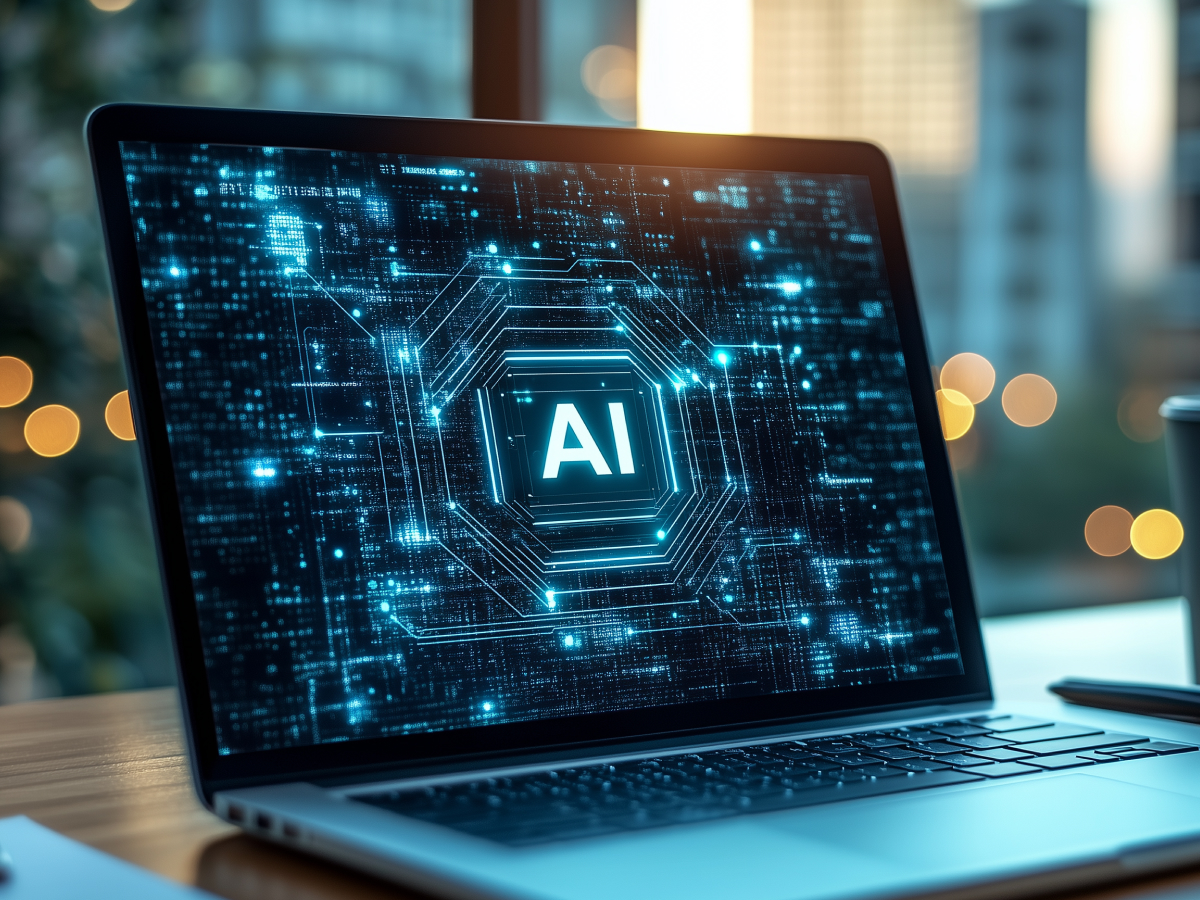AI coding tools are improving productivity
Time is our most valuable resource, and in software development, it often slips away on repetitive tasks. AI coding tools are fundamentally changing how developers work by automating these routine processes. Imagine having a tireless assistant that writes boilerplate code, suggests the next logical step in your development, and even reviews your work for potential errors. That’s exactly what these tools do.
The result? Faster development cycles and a team that can focus on the big picture, solving complex problems and delivering innovation. For companies, this means less wasted time and more progress. In a competitive market, speed matters. But speed without quality is meaningless, which is why these AI tools are so effective. They help developers move fast while maintaining precision and consistency.
Code quality and consistency at a new level
Code quality is a survival factor in modern software development. Poor code leads to bugs, security vulnerabilities, and technical debt that weighs down progress like an anchor. AI coding tools step in to raise the bar. They analyze patterns from millions of lines of code to detect inefficiencies, bugs, and inconsistencies before they become problems. Think of them as a second set of eyes, but faster and more thorough.
When we talk about code consistency, it’s about making sure every piece of code follows the same high standard, regardless of who wrote it. Consistent code is easier to maintain, easier to scale, and ultimately reduces risk. The real magic happens when these tools not only detect problems but suggest best practices and optimizations. It’s like having an experienced mentor embedded in your development environment.
Reducing technical debt
Technical debt is like financial debt, you can ignore it for a while, but eventually, the interest catches up. It’s what happens when shortcuts today create costly problems tomorrow. Every software team knows the pain of messy, unoptimized code that slows development and drains resources.
AI coding tools offer a way out. They provide continuous suggestions for refactoring, keeping your code clean and your technical debt low. It’s proactive, not reactive. Tools like Figstack go beyond the basics, identifying architectural issues and recommending improvements before they escalate. The difference is staggering, teams spend less time firefighting and more time innovating. And if you’ve ever been stuck managing legacy systems with layers of hidden debt, you know how valuable that is.
AI as a learning partner for developers
For new developers, AI tools explain the code they generate and suggest alternative approaches, turning every coding session into an opportunity for growth. For experienced developers, they’re a bridge to new patterns and practices, exposing them to cutting-edge approaches they might not encounter otherwise.
AI tools lower the barrier to entry for new talent while helping veterans sharpen their skills and stay relevant. Tools like AskCodi take it further with interactive tutorials and detailed explanations that demystify complex processes. The outcome? Developers who are constantly improving, continuously learning, and always pushing their limits. For companies, that means a more skilled and adaptable workforce, a clear competitive advantage.
Smooth integration is key
The most powerful tool in the world won’t do much if it doesn’t fit into your workflow. AI coding tools are no exception. Straightforward integration into existing development environments is key. Developers live in Integrated Development Environments (IDEs) like Visual Studio Code or IntelliJ IDEA. AI tools that plug directly into these platforms become an extension of the developer’s natural workflow, increasing productivity without interruption.
AI tools that integrate with version control systems like Git can track code changes and suggest improvements based on the evolution of the codebase. Some even connect to Continuous Integration/Continuous Deployment (CI/CD) pipelines, making sure the AI works alongside automated tests and deployments. Cursor AI is a great example of this, providing smart navigation, debugging assistance, and automated refactoring right within the developer’s workspace. The best tools don’t ask you to change how you work; they adapt to how you already work and make it better.
Security at the core of AI coding
Security isn’t optional. It’s the foundation of modern software development. A single vulnerability can cost millions, damage reputations, and leave companies scrambling to recover. AI-powered security tools have become invaluable to development teams, helping them catch issues long before they become public problems. They scan code for vulnerabilities, monitor dependencies, and enforce compliance with security best practices.
Take Snyk, for example. It integrates directly into the coding process, offering real-time security analysis. It identifies, explains and suggests how to fix problems. A proactive approach makes security an ongoing part of development, not something tacked on at the end. The beauty of these tools is that they remove much of the guesswork. Developers can focus on building while the AI keeps watch, flagging potential risks and making sure the code stays clean and secure.
Documentation becomes effortless and powerful
Documentation is often treated like a chore, a necessary evil that’s easy to push aside when deadlines loom. But great documentation is the basis of collaboration and long-term code maintenance. AI coding tools simplify and automate this process, generating documentation that’s clear, contextual, and comprehensive. They go beyond describing what the code does; they explain why it does it, providing valuable insight for anyone working with it in the future.
Figstack is one of the leaders in this space. It creates meaningful documentation that explains the reasoning behind code decisions. It reduces onboarding time for new developers, improves collaboration across teams, and makes sure that knowledge doesn’t walk out the door when a key developer leaves. Automated documentation can be a safeguard for the future.
Tailored tools for specific needs
Not all AI coding tools are built the same. Some are generalists, offering a broad range of features for different types of development, while others specialize in specific areas. The trick is finding the tool that fits your unique needs. For full-stack development, Qodo is a top choice. It understands complex project contexts and can generate entire features based on natural language descriptions. For machine learning and AI applications, Hugging Face is unparalleled, with a focus on model deployment and optimization.
Then there are tools like MutableAI, built for enterprise teams that need comprehensive collaboration features and advanced analytics, or AskCodi, which caters to developers looking for a learning-first approach.
“The takeaway here is simple: Don’t follow the hype. Evaluate the tools based on your tech stack, team size, and specific challenges. The right tool can unlock massive value, but the wrong one can bog you down.”
Final thoughts
AI coding tools are the future of development. They accelerate productivity, improve security, and help developers grow. But they’re not magic. The key is to integrate them thoughtfully, focusing on how they can improve your existing workflow and help your team work smarter, not harder. With the right tools in place, companies can move faster, build better, and stay competitive in an increasingly demanding market.
Key executive takeaways
- Increased productivity: AI coding tools automate repetitive tasks, helping teams to focus on innovative, high-value projects. Leaders should invest in these solutions to accelerate development cycles and improve overall productivity.
- Improved code quality and security: When using vast datasets and pattern recognition, these tools enforce consistent coding standards and detect vulnerabilities early. decision-makers must prioritize integration to minimize risks and maintain reliable, secure software.
- Reduction of technical debt: Proactive code refactoring and automated documentation help maintain clean codebases and reduce long-term maintenance costs. Executives should consider these tools for sustainable development practices and cost efficiency.
- Tailored development solutions: Specialized AI tools address diverse needs, from full-stack projects to machine learning, offering customized support. Leaders should assess their specific tech stacks and challenges to select the most appropriate tools, increasing scalability and bringing a competitive edge.





